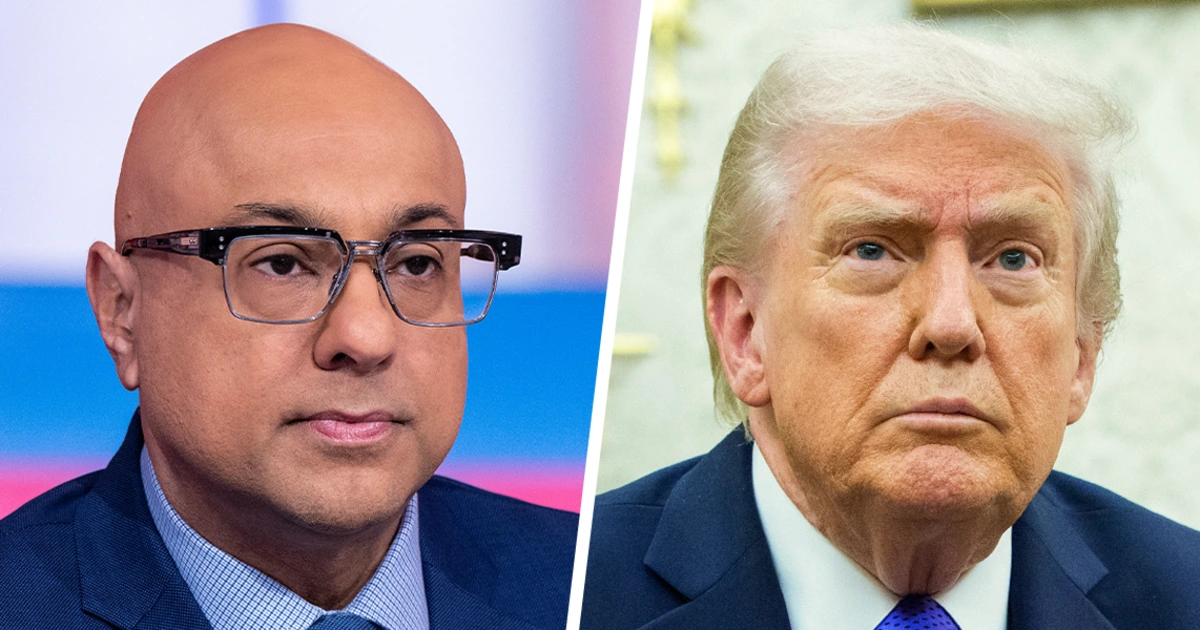Copyright MSNBC

This is an adapted excerpt from the Nov. 9 episode of “Velshi.” On Feb. 18, 1915, President Woodrow Wilson screened a film for senior government officials in the East Room of the White House. It was called “Birth of a Nation,” a three-hour piece of propaganda that glorified the Ku Klux Klan and portrayed emancipated Black Americans as unworthy of freedom. Today’s Republican Party has moved beyond the dog whistle, openly aligning with forces that once existed only in the darkest corners of the internet. It marked a chilling inflection point in the U.S., when white nationalism stepped out of the relative shadows and into the center of government. If that sounds familiar to you, it’s because we are watching it happen again. On Nov. 4, Democrats across the country secured victories in several high-profile elections by embracing their diverse wings and bringing voters they had lost to Donald Trump back into the fold, particularly Hispanic voters, young men and those without college degrees. As Democrats broadened their coalition, the Republican Party moved farther toward the fringe of the extreme right-wing, toward something more tribalistic and dangerous. Republicans have become increasingly defined by white Christian nationalism, exclusion and resentment of the nation’s pluralism — and they’re no longer feeling the need to disguise any of it. Today’s Republican Party has moved beyond the dog whistle, openly aligning with forces that once existed only in the darkest corners of the internet. That much was on display when Tucker Carlson, one of the most recognizable figures in conservative media, hosted a friendly, two-hour conversation with Nick Fuentes, a Holocaust denier who praises Adolf Hitler, spews open antisemitism and calls for a white Christian America. Perhaps it is not all that surprising that Carlson did that. But what came next marks a notable rupture in today’s conservative movement. The Heritage Foundation, the most powerful conservative think tank in Washington and the one that gave us Project 2025, came out and defended Carlson’s interview. These are not fringe bloggers, nor anonymous trolls. The Republican Party’s main policy shop validated the casual platforming of a neo-Nazi. The Heritage Foundation’s position sparked a revolt inside the institution, with staff threatening to resign and donors expressing outrage. Only then did the Heritage Foundation’s president, Kevin Roberts, issue an apology of sorts, telling staffers in a leaked town hall that it was a mistake to defend the interview, while also claiming he “didn’t know much” about Fuentes before he’d spoken out in defense of Carlson’s platforming of him. But this drift toward white Christian nationalism didn’t happen overnight. The pipeline has been under construction for years. It used to start with conspiracy theories bubbling up on extremist forums like 4chan or 8chan. Then, they migrated into “edgy” far-right talk radio shows; voices like Rush Limbaugh helped mainstream them. From there, Fox News could cover them with just enough distance to claim “we’re only reporting.” This pipeline functioned as a permission structure, a gradual way to launder fringe ideology into mainstream conservative politics. Meanwhile, Trump’s rise had already cultivated a significant following in those dark corners. By 2016, he said out loud what Republicans had spent years hinting at. He called immigrants “rapists” and “murderers,” advocated for a ban on immigration from certain Muslim countries, and defended white supremacists — and he won. It wasn’t a “drift” toward extremism as much as it was a strategic alliance. The conservative movement rapidly coalescing around Trump heard the lesson clearly: the path to power runs through the fringe. Fuentes is simply the logical endpoint of that lesson. He doesn’t use that nifty term that Breitbart uses, “globalists,” he just says “Jews.” He doesn’t allude to white replacement; he openly calls for white rule. And now, instead of recoiling, important parts of the conservative movement are courting him. While the Democratic Party is finding its footing, Republicans are starting to feel the pressure of their alliance with white nationalism. Traditional conservatives are horrified that neo-Nazism, anti-semitism and Islamophobia are becoming normalized, while MAGA influencers attack those very traditional conservatives as “cowards” for refusing to embrace it fully. Trump’s ascent, aided by institutions like the Heritage Foundation, shows what happens when bigotry is granted legitimacy at the highest levels of government. For the first time in generations, ethnonationalism is being institutionalized and incorporated into governing priorities: Smithsonian exhibits, quietly altered to fit a white Christian narrative; U.S. Immigration and Customs Enforcement sweeps targeting brown families across the country; plans to fast-track white South African “refugees” while turning away asylum-seekers of color. This is not the “small government” conservatism that Republicans once preached. This is the federal government being weaponized to enforce a singular, state-approved identity. No one should be surprised because much of this was, in fact, spelled out in Project 2025. In 2024, Russell Vought, its lead architect and a self-described Christian nationalist, was caught on undercover video detailing the plan if Trump returned to power. “I think you have to rehabilitate Christian nationalism, you have the largest deportation in history,” Vought said. The secret recording, obtained by the investigative nonprofit Centre for Climate Reporting, was made while Vought believed he was speaking to relatives of a wealthy conservative donor. In that same conversation, he detailed how hundreds of executive orders, regulations and memos were already being drafted to rapidly reshape America were Trump to return to power. When discussing Trump’s mass deportation plan, Vought said it would help “save the country.” He argued mass deportations would spark a national reckoning that would “get us off multiculturalism.” What Trump once pretended to keep at arm’s length is now central to the Republican governing project. Like all nationalist movements, it’s starting to follow a familiar pattern: Rewrite the national story: control museums, universities and textbooks to control the “official” story of America. For example, if the Smithsonian, a government institution, tells a white nationalist origin story, anything outside of that framework becomes “un-American.” Purify the population: If only certain families “belong,” then mass deportation becomes normalized. That’s why Vought called it essential to “saving the country.” Replace democracy with identity rule: Once you define the nation by race and religion, elections become a threat, because a multiracial electorate won’t deliver you white Christian rule. How do you make this white nationalist project work — and stick? Attack the system itself: enter mid-decade gerrymandering, attack early and mail-in voting, deploy federal “monitors” selectively to intimidate voters in areas where the other side tends to win. The truth is simple: America cannot remain a multiracial democracy and fulfill Trump’s vision of “making America great again.” One of those futures must give way to the other — and that is the fork in the road at which we now find ourselves. On Nov. 4, we saw more than a glimmer of hope for the pluralistic, multicultural, inclusive vision of America. Millions of voters delivered a resounding “no” to the white Christian nationalist project, handing Democrats a clean sweep up and down the ballot, including in red districts across the country. The truth is simple: America cannot remain a multiracial democracy and fulfill Trump's vision of “making America great again.” It wasn’t just “a good night for Democrats.” Voters turned out in extraordinary numbers for an off-year election to defend the system itself: a clear repudiation of the shrinking Republican ideological bunker. For the first time in a long time, voters across demographics, white, Black, Latino, Asian, young, suburban, college and no college moved in the same direction. And independents, the voters who decide close elections, have fled the Republican Party’s extremism toward something that looks like the America most of us actually live in — or at least want to live in. A century ago, when Wilson rolled that film inside the White House, he signaled that America’s darkest impulses had a friend in the nation’s highest office. His presidency is remembered for turning racism into federal policy, including the unprecedented segregation of government workplaces. History teaches us that extremist movements, like the one reshaping today’s Republican Party, do not quietly retreat when they lose. Extremism always resurfaces, and when it does, citizens must reject it repeatedly and forcefully.



